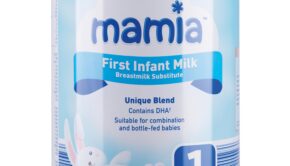Competition Authority textbook omits answers at the back
14 August 2009
The Competition Authority’s (CA) recent investigation into why grocery prices are 30% higher here than in the UK, proved less than riveting. Exchange rate pass-through levels based on “empirical studies” provided a literally textbook response.
It was acknowledged, at least, that because higher importation and distribution costs weren’t tallied into product cost, Forfás “probably underestimates” the cost of doing business here. Again however, answers were not forthcoming: “quantification of this additional factor [being] beyond the scope of this report.”
The one solution the CA does offer is not new and unfortunately comes attendant with its own gruesome can of worms. It argues yet again that Ireland’s retail planning caps are preventing large-turnover, low-margin business models such as Asda from entering the country and introducing significantly lower prices here.
However, the report also notes the UK’s distribution system is more efficient, being “built on fully developed retailer central distribution systems.” Could it not be said that all retailers fully addressing this issue would yield better results than removing the planning caps? Furthermore, Tesco has now set an example in switching to direct sourcing from the UK. What therefore would entice the likes of Asda and Sainsbury’s (who don’t have buying offices in Northern Ireland), to erect them here and benefit the Irish economy in a wider sense?
FDII has argued that the fact certain retailers have been demanding significant price reductions from January but didn’t pass them on to consumers until this summer, “demonstrates retailers do control the prices.”
Here it should be noted: although the report was based on 108 submissions, including seven “general retail” submissions, contributors could effectively reveal whatever they wanted.
However, what motivation do suppliers have to ‘out’ retailers they are dependent on for survival? The report states: “If a retailer accounts for 50% of an individual supplier’s sales in the ROI, the retailer will be able to exert pressure…as the supplier has more to lose.” Would it not be more useful to reveal the percentage of suppliers in this position?
Herein lies the crux of the matter. Although competition law provisions prohibit anti-competitive practices, according to Eoin Kealy of LK Shields Solicitors, such offences can be difficult to prove. “While a retailer is prohibited from coercing a supplier to pay ‘hello money’; if a supplier decides to do it themselves of their own accord, that is allowed. In practice, it’s very hard to prove compulsion or coercion.”
Similarly suppliers in the UK, while welcoming a revised Groceries Supply Chain Code of Practice in February, have nevertheless demanded an ombudsman be introduced to deliver proactive enforcement. Perhaps further monitoring in Ireland could also prevent a supplier becoming the fall guy for the greater good?




 Print
Print






Fans 0
Followers